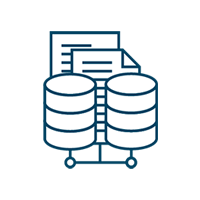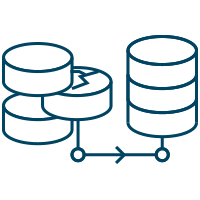Arcserve VirtualBoot™ technology boots a backup image of a system volume into a virtual machine (VM). Anytime you need to quickly virtualize a system that is protected by our backup software, VirtualBoot is the tool you use.
Use VirtualBoot in these scenarios:

Testing backups
You can boot a backup image into a virtual machine to make sure a restored system would function properly. VirtualBoot loads the operating system, applications, and data into the VM, thus giving you a reliable and speedy way to regularly verify that your backups work as expected.

Temporary system failover
Restoring a large system can take a lot of time, but virtualization can help. In just a few minutes, you can create a temporary VM of a failed server or workstation with VirtualBoot to tide you over. Because your VirtualBoot VM has everything in it that the original machine did, it still has our backup software installed and can continue to back up the system, thus protecting any new files or folders.

Historical data access
Many data files require specific software to open them. When you need access to old data (such as during an investigation or audit), and you no longer have the application that opens these data files, you can use VirtualBoot to boot an archived backup image. The resulting VM will contain both the data needed and the application that opens the files.

Historical data access
Many data files require specific software to open them. When you need access to old data (such as during an investigation or audit), and you no longer have the application that opens these data files, you can use VirtualBoot to boot an archived backup image. The resulting VM will contain both the data needed and the application that opens the files.

Seamless recovery and migration (for vSphere)
Opt to permanently recover or migrate a physical system or VM (of any flavor) to an ESXi host (requires a vSphere cluster). This is possible because you can choose to have the data from the backup images written directly to the .VMDK file. After migration is complete, the new VM operates independently of the original system's backup image files.
Technical Specifications
This technology is included with ShadowProtect backup software
In ShadowProtect®, you can use VirtualBoot to boot any ShadowProtect backup.
- Boot a Windows or Linux backup on a supported Linux version.
- Boot a Windows backup on a supported Windows system.
- Boot any backup of a Windows system as a guest VM on a Hyper-V host when using Windows 11, Windows 10 Enterprise, Windows 10 Pro, Windows Server 2022, Windows Server 2019, Windows Server 2016, or Windows Server 2012 R2.
- Boot any backup of a Windows or Linux system as a guest VM directly on an ESXi host when using a VMware vSphere cluster (see requirements below).
VirtualBoot leverages Oracle VirtualBox, Microsoft Hyper-V, or VMware vSphere to boot a backup image into a VM.
VirtualBoot with VirtualBox:
- ShadowProtect supports most versions of VirtualBox: see SPX Release Notes for a list.
- You should install and configure VirtualBox ahead of time.
VirtualBoot with Hyper-V:
- When using VirtualBoot with Hyper-V, the host has to be Windows 11, Windows 10 Enterprise, Windows 10 Pro, Windows Server 2022, Windows Server 2019, Windows Server 2016, or Windows Server 2012 R2.
- To use with Hyper-V, you need to install the VirtualBoot Hyper-V Plugin.
VirtualBoot with vSphere:
- VirtualBoot for vSphere requires
- VMware vSphere cluster
- VMware ESXi 6.0 U2 or newer
- VMware vCenter Server 6.0 U2 or newer
- SPX v6.3 or newer
- The free version of ESXi is not supported.
- To use, configure the VirtualBoot vSphere Plugin through a wizard in your ShadowProtect user interface.
For more information, see SPX User Guide: VirtualBoot.

